A few insider tips on what to pack for Japan can make all the difference. We share what we’ve learned in this essential Japan packing list for first time visitors.
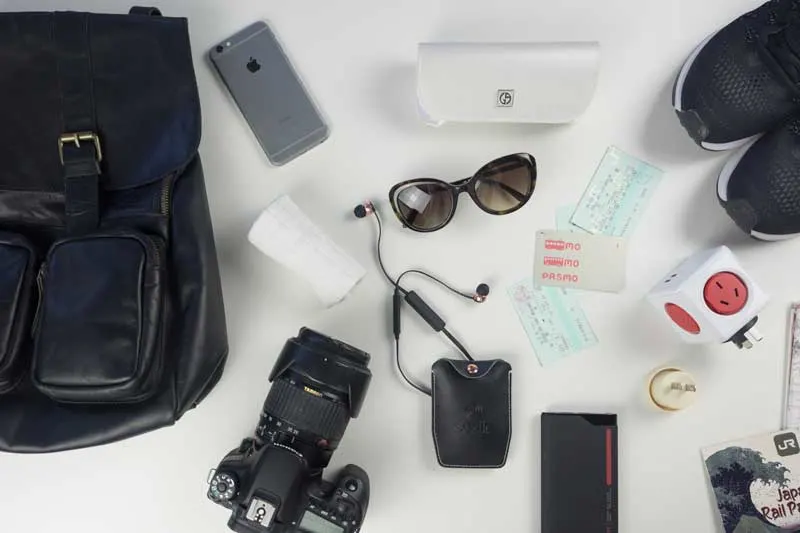
I’m not going to insult your intelligence here by telling you how many pairs of socks to take or what size bag to pack, we all have our own dress style and you’re either a pack into your hand-luggage person or you’re not. It’s no secret that I’m not although I do like to minimise as much as possible with an effective capsule wardrobe that all mixes and matches together.
What I’m going to cover here is a handful of items that I’ve found indispensable on each and every trip we’ve made. I hope it will be helpful to you too as you count down to your holiday and put together your Japan packing list. If you have any questions please leave us a comment at the bottom of this article or through our contact page.
Still in the planning stage of your trip? Find some great inspiration in our comprehensive Japan Guide covering destinations all around the country
Table of Contents
- Our Japan travel essentials
- 1. Comfortable shoes that are easy to remove
- 2. A stored value card for trains and buses
- 3. Your favourite earphones
- 4. Cash and your ATM card
- 5. A travel SIM or WIFI router
- 6. Sunglasses
- 7. Your Camera Gear
- 8. A Travel Day bag
- 9. A small towel
- 10. Travel power accessories
- 11. Probably not the Japan Rail Pass anymore
- What to wear in Japan
- What not to pack for Japan
Our Japan travel essentials
1. Comfortable shoes that are easy to remove
To see Japan you’re going to walk a lot. So unless you’re spending most of your day on a bus on an organised tour it can’t be avoided. The primary mode of transport for locals and visitors alike is a combination of the super-efficient public transport system and your feet.
Like most big cities the streets are busy and people move around at a moderate to fast pace. With days or weeks on your feet, you are going to want to be kind to them. I know you may want to make a fashion statement in Tokyo but I’m going to side with your feet on this and suggest comfortable shoes.
I know, BORING, but your feet will thank you for it. If you want the chance to dress up for that splurge at one of the many Michelin-starred restaurants or high tea with an astonishing view of the city then go ahead and pack your killer heels. For your urban exploration, reasonably flat and comfortable shoes that won’t give you blisters and you can walk all day in are what you are going to want.
We regularly walk at least 10 kilometres a day in Japan, you don’t have to do that much but it is surprising how quickly it clocks up.
The second trick is to pick shoes that are quick and easy to take off and put on. You’re going to be doing that a LOT too, far more than you’ve probably needed to do in other countries. In Japan, you will not only take off your shoes when you enter someone’s home but also in most temples, shrine buildings, castles and anywhere there’s a tatami mat floor.
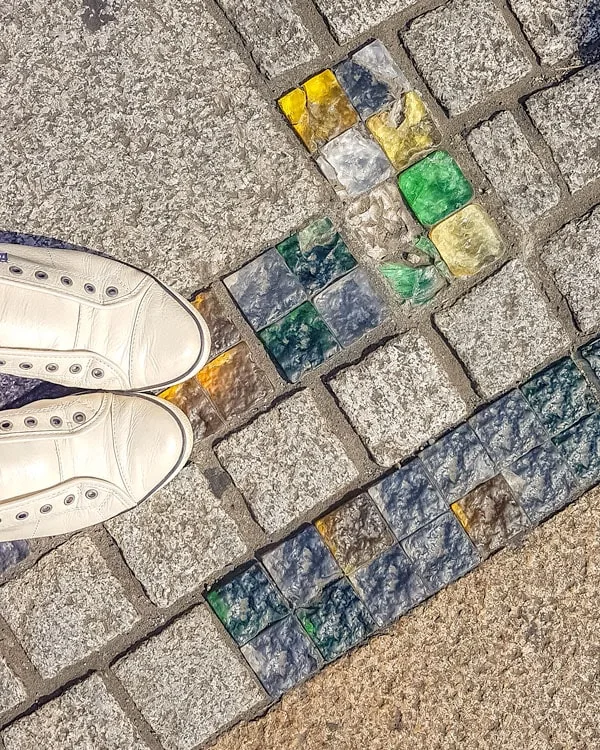
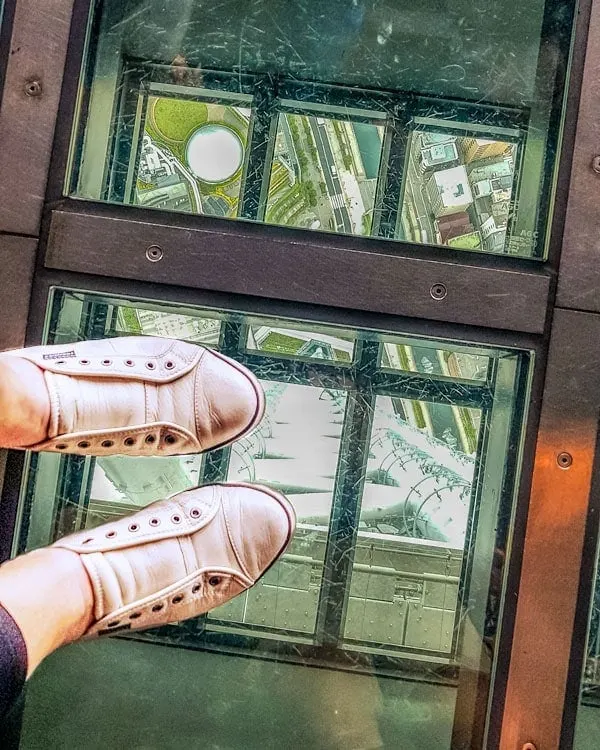
On my last couple of visits, I’ve put a lot of miles on my Frankie4 Nats. Frankie is a brand created by a Podiatrist and Physiotherapist couple in Brisbane so they are kind to the feet. I’ve got several pairs from the range but these particular leather sneakers work with jeans, casual pants, and even dresses. Best of all they have an elastic gusset meaning that while they come with laces for a more standard look I wear them without most of the time in Japan so they are very easy to slip on and off while still providing excellent arch support and comfort.
2. A stored value card for trains and buses
The Japan Rail Pass works on Japan Rail lines (or ferries) but there will no doubt be times on your travels when you want to use subways, buses and non-JR trains. The best option for this is to tap and go with a stored value card, often referred to as an IC card or intelligent card in Japan.
The IC cards include SUICA, ICOCA and PASMO. Changes over the past few years have made these much more useful as they’re no longer only used in specific regions they can be used interchangeably as you travel across the country. A few years ago I used to have one for Tokyo, another for Osaka and a separate day or weekly pass for Kyoto, now I can just load up one to use right across Japan.
What will determine which one you purchase now will be where you want to pick it up, SUICA or PASMO in Tokyo or ICOCA in Osaka.
Not only can you use these little gems for your transport but they also work in some convenience stores, called Konbini in Japan and many vending machines making them a convenient way to have cash on hand without carrying a heap of change.
Further Reading | Tips and Tricks on getting the best out of transport in Japan
3. Your favourite earphones
It’s a fair distance flight to Japan from Australia, the USA or Europe so you’re going to want some entertainment and comfort on the plane. You’ll also likely spend some time on bullet trains, local trains, subways and possibly even buses where you may want to block a bit of external noise, listen to your latest podcast or just relax with some music.
We like to minimize the number of times we move accommodation and as a result, we tend to take longer day trips. It often means early starts or a reasonable commute back after dinner and time in transit starts to add up but it works well for us.
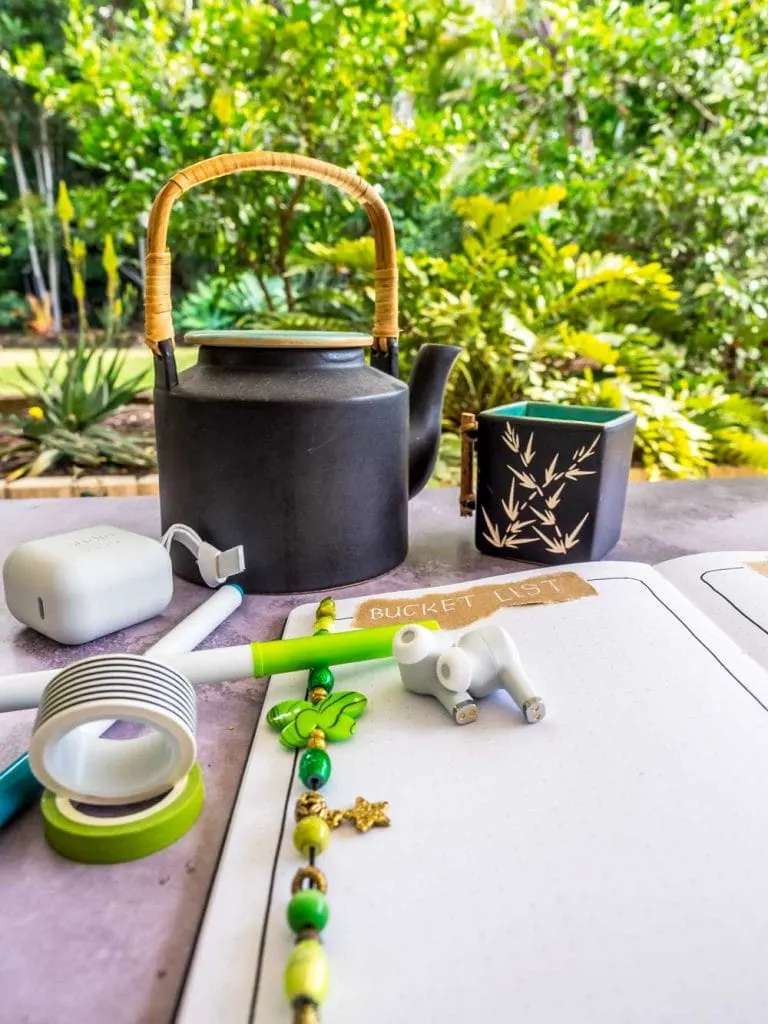
I’ve recently switched to the Sudio ETT wireless buds which seem to give me all the use I need during the day on one charge plus multiple additional charges are stored in the tiny wireless case. You can read our full review of the Sudio ETT earphones here.
I’ve used Sudio products for years, these latest ones have replaced the Niva and Vasa Bla earphones that have alternated in my purse constantly over the past couple of years. I absolutely love their design aesthetic, comfort and sound quality but also that they’ve been so durable for daily use despite constantly floating around somewhere in the bottom of my bag or backpack.
Drew’s current favourites are still the Regent wireless over-ear model and I sometimes use the Regent II, especially when flying alone. These offer the benefit of cancelling out the majority of external noise which is great in busy airport lounges, inflight or when working around a lot of ambient noise. They’re super comfortable to wear too, like sound pillows for the ears.
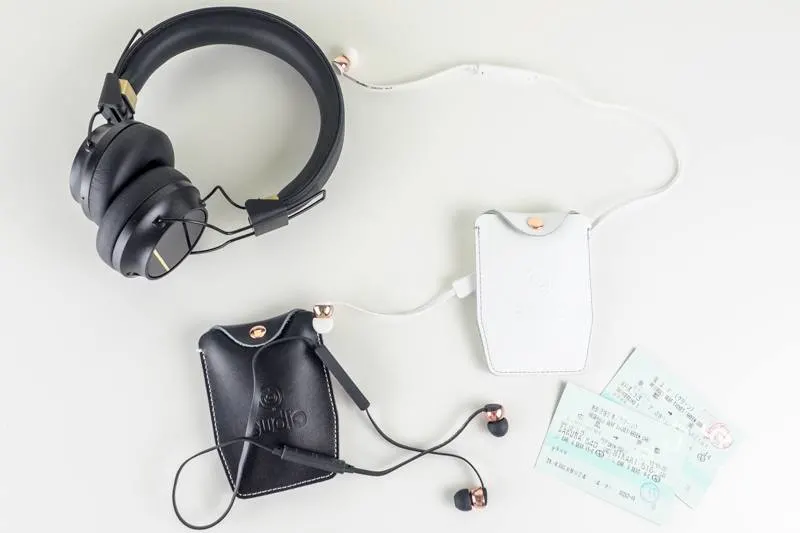
4. Cash and your ATM card
Something that surprised me on our early visits to Japan was that despite its advanced electronic technology, automation and love of gadgetry the consumer banking system is positively antiquated and cash was the only accepted payment in many places.
Things have changed quite a bit in this area over our years of visiting but Japan is still a cash economy. In preparation for the influx of visitors expected for the Olympics you can now generally use credit cards in hotels, middle to high-end restaurants, department stores, some western fast-food restaurants and taxis but it is not the norm for smaller purchases and debit cards unless powered by a credit card brand generally won’t work.
For those of us used to swiping a card or even our phone for everything from a cup of coffee to a major purchase, this may take some getting used to. While I suggest arriving in the country with some cash if at all possible you will undoubtedly need to refill your wallet if you’re there for more than a few days.
EFTPOS machines that operate in English are fairly easy to find, especially if you’re in major cities. The post office machines have an English button as do the machines in most convenience stores. The 7-Eleven is our backup which has always had the ‘English’ button cash and recently Lawsons and the slew of others also have the language option available and accept international cards.
To keep your expenses down check what your bank fees are for withdrawing cash from an international ATM before you leave home, Ubank, for example, has no overseas fees on their transactional account but the 4 big banks charged for every transaction and it can add up. Withdraw cash in the largest sum you are comfortable carrying at a time to avoid frequent transactions and always withdraw from your cheque or savings accounts, taking a cash withdrawal on a credit card incurs interest immediately, there is no free credit period.
5. A travel SIM or WIFI router
There was a time early in our travels to Japan when we could get by with WIFI at the hotel and Starbucks and then use paper maps throughout the day. For some people that will still work but Japan doesn’t have extensive free internet and while unplugging at the beach or poolside is a novelty it can be more frustrating than freeing in a busy country like Japan especially if you don’t speak the language fluently.
There are some key apps and websites I like to have immediate access to when travelling in Japan so internet connectivity as we move around is essential for us. The top three I use in Japan are:
- a translation app like Google Translate or VoiceTra that will read a sign or menu and even help with translating a simple conversation,
- Google maps that I integrate with a personalised ‘my map’ that I have created in advance with my key destinations and wishlist, and
- a train app, I’m currently using the Japan Transit Planner from Norikae. While Google Maps works adequately if you are just hopping the subway around Tokyo, I find the algorithm makes things a bit more complex than they need to be and won’t always get the best solution for longer distances or more out-of-the-way spots.
I’ve recently had to review my connectivity options as my WIFI router was due for replacement, with the new options available I have switched to using a SIM or eSIM from TravelKon that I have in my hands before I leave Australia. It saves time buying or collecting it at the airport on arrival when I am tired and just want to get into the city and I have it connected and working before I step off the plane.
I’ve discussed all the options including free WIFI in detail in another article to help you decide if want a connectivity option and which one to go with, global roaming, WIFI routers, renting local SIMS in Japan and international SIMs will suit different travellers.
6. Sunglasses
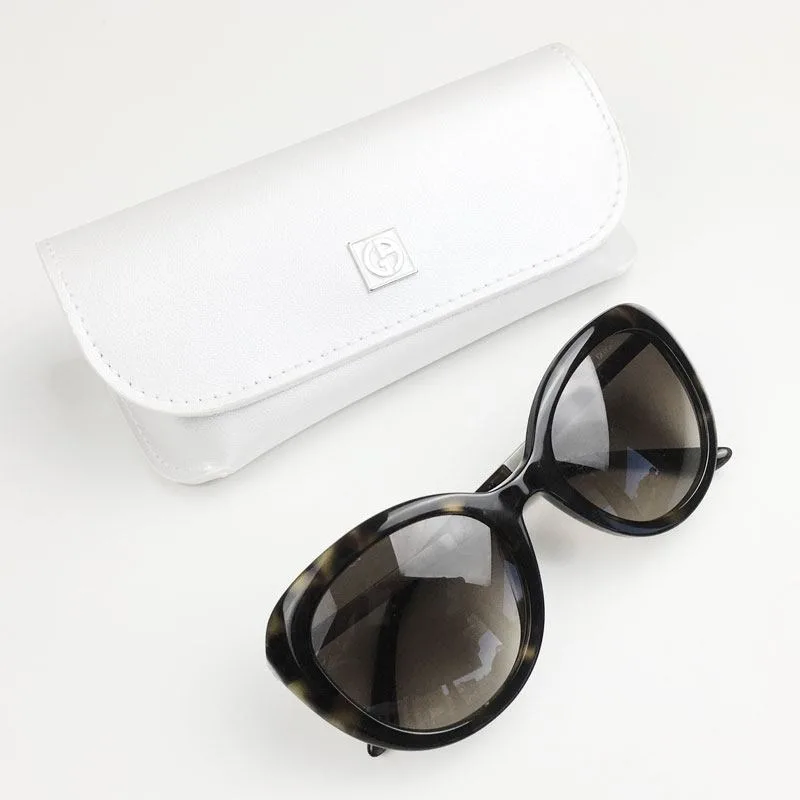
I usually have at least one pair of glasses in my bag every day because I live in a subtropical region with a very high number of sunny days. What did surprise me though is that I also wear them every day in Japan, no matter what season I travel in.
In the shoulder seasons of spring and autumn, those grey skies can cause a huge amount of glare especially when you walk around looking up at the blossom.
On winter visits again we found the combination of clear but cold days and the reflection snow and wet ground made them essential.
7. Your Camera Gear
What makes the cut for camera gear is the part of packing I always struggle with the most. It generally comes down to how much I can fit into my 7 kg of cabin baggage as I won’t trust camera gear or electronics to the hold of an aeroplane. While I agree with the consensus that the best camera is the one you have with you when the shot presents itself, and phone cameras have progressed a long way, I still like to pack something with a bit more creative control, Japan is a very photogenic country.
I love my Olympus OMD EM1, it’s a fabulous camera and takes incredible pictures on a small and light body so it’s much easier to fit that into my bag and to carry all day when travelling. If there’s only room for one lens it will be the Olympus Pro 12-40mm (or 24mm – 80mm in full format terms) so that’s almost always attached.
If I need to go even lighter then the Canon G7x mkII has been a great alternative. It’s point and shoot in size but has full manual options and shoots in RAW, it takes decent video with creative options like timelapse and is just over half the price of the Sony RX100 which is also a very nice compact camera.
When using your camera all day a good strap makes all the difference and a couple of years back I switched from my women’s Black Rapid crossbody to the Peak Design Slide Lite after the Black Rapid worked its way undone one too many times. I’ve found its attachment mechanism more trustworthy and I love that it’s so quick-release to avoid accidents when the camera’s on the tripod.
Its slimline design works well-worn crossbody even with the additional straps of a pack or bag but it’s also designed to be worn around the neck or flipped over for more traction just on the shoulder. I also do a bit of a wrist wrap with it when doing food and product photography that keeps it secure and out of the way.
8. A Travel Day bag
Some may prefer to travel with a tote or large handbag. I do myself in some countries when I’m concerned about theft but in Japan, I prefer my leather travel backpack as my daily carry. My current one from Colorado is robust and the perfect size to fit a tonne of stuff in it including my Macbook or camera gear but still looks stylish enough to pass as a handbag when it needs to rather than something I used to carry my school books in.
For hand luggage, I’ve been using the Peak Design Everyday Backpack for years now and regularly carry it on day trips and hiking too. I use the 20L and Drews has also converted and purchased the 30L. It’s a unique design but I love the adjustable compartments and pockets that fit so much in and it’s still streamlined and very easy to pack with everything having its place. It’s also comfortable to carry even for longer periods and fully loaded. There are separate spaces for everything and I always feel my laptop, iPad and camera gear are well protected.
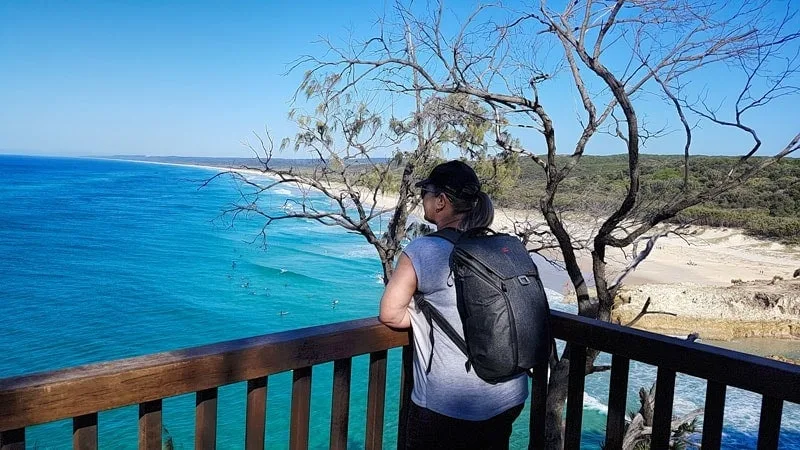
9. A small towel
This is a little quirky but while Japanese public toilets are generally kept extremely clean and supplied with toilet paper they generally don’t have air dryers or paper towels for drying your hands. If you plan on visiting a few shrines and temples throughout the day you will also need to do the customary hand washing as you enter each one. In the cooler months, this can leave you with very sore and chapped hands after a few days if you don’t dry them well. After a couple of times just giving them a shake and wiping them on your jeans isn’t enough.
Many Japanese women will carry a small towel with them known as tenugui, they are available in many souvenir shops and are generally a smooth cotton fabric rather than the terry cloth towel common in the West. These multi-use items are re-purposed for everything from drying your hands and mopping your brow at a hot summer festival to a makeshift apron and wrapping a bottle of sake for a gift. A sand-free towel is also a compact option to pack and useful when you come across a foot onsen
10. Travel power accessories
I have a couple of items in this category, the first thing in my bag when packing for Japan is a couple of power adapters as our plugs are different in Australia. You can always pick them up at BIC Camera in Japan fairly cheaply if you don’t have one. The second gadget is a power cube, like a modern plugboard but it takes up very little space and allows me to charge up to 6 devices at once with 4 power plugs and 2 USB sockets into a single power adapter.
With at least two cameras, two phones, a laptop, two tablets plus sundry gadgets such as wireless earphones and a fitness watch there’s a bit of a nightly routine involved in plugging everything in so it’s ready to go in the morning, downloading the camera cards and backing everything up.
The other item we can’t do without is a power bank. We use a 10,000 ohm one as that is the maximum some airlines allow you to fly with and it’s the best balance of capacity to weight for our use giving multiple recharges to use throughout the day. Using maps, train timetables, phone cameras and social media, in addition to iPad or Kindle, portable WIFI and wireless earbuds there is always something that needs a top-up at some stage.
11. Probably not the Japan Rail Pass anymore
The Japan Rail Pass was routinely our top money saver when travelling in Japan. We’ve bought one for almost all of our trips since 2010 but the 2023 price increase has changed that dramatically.
Now more than ever, the JR Pass isn’t ideal for every trip or traveller so ignore what you hear and do your own calculations. It is convenient but not worth paying a premium over booking individual tickets as you go. We have a guide on EVERYTHING you need to know about the Japan Rail Pass so you may want to take a read of that if you are considering getting one.
Click to see the latest prices for our favourite online supplier of the Japan Rail Pass

What to wear in Japan
Japan is fairly moderate in the range of what is acceptable to wear, especially if you’re a visitor. Tidy casual attire is quite acceptable even in the big cities for your urban exploration. Somewhere like Tokyo, you’ll probably see the full spectrum from the morning swarm of impeccable grey suits to Lolita dresses and fluffy character onesies.
Somewhere in the middle is your best bet, you don’t need a new wardrobe to visit Japan but there are a couple of taboos still to keep in mind. While very short skirts are common, visible cleavage is not, necklines are generally kept modest and tattoos are still not widely accepted in Japan, they may cause offence and in some places such as onsen (public hot pools), you will usually be refused entry.
We’ve visited Japan in most seasons and the biggest tip on dressing for Japan’s climate is to wear layers. The weather can be highly variable from one hour to the next, especially in Spring and Fall. Depending on the direction of travel an hour’s trip on a train can have you in a vastly different climate.
Learn from our Kyoto sunshine to Nagahama snow faux pas and even in the apparent consistency of Sapporo’s snowy winter, we benefited from layering. Every time you step into a restaurant, shopping centre or even a train you are going to be toasty hot even if there’s a blizzard enveloping the city outside.
As a general rule, I’d also suggest packing a capsule wardrobe of items that mix and match together well even if that’s not your normal style. Be brutal, if it doesn’t go with at least 2 other items in the suitcase it stays behind. Items that can be dressed up for the evening and down a bit in the day are most useful and as with shoes, prioritise comfort over cute.
What not to pack for Japan
Sometimes what you leave out of your case can be as important as what you put in. Here are a few things to consider if you’re trying to reduce the volume.
Basic toiletries. Most hotels and we’ve stayed in a fair few across Japan over the years, have an exceptional selection of body care products. Beyond the standard shampoo and soap, they regularly have toothbrushes, nail files, and even razors. The one thing I have wanted on occasion that is common in overseas but usually missing in Japan is body lotion, the air conditioning and dry air leave my skin parched.
I wouldn’t travel without my holy grail products for a full trip but if you want to make use of the popular luggage transfer service or take a single night somewhere with minimal luggage such as Kinugawa Onsen or Kurashiki Bikan then these provided products can be an option and take just what you need in your overnight bag.
The other reason I might intentionally pack light on skincare and hair products is that most of my all-time holy grail beauty products are Japanese brands. These aren’t always cheap but they are significantly better priced than at home so Shu Uemura, SKII, Shiseido and my holy grail Biore face sunscreen are coming home with me in bulk. Plus I need a bit of space to try a few new products out each trip.
Umbrellas. Yes it does rain fairly frequently and you’ll likely end up wanting one but umbrellas are cheap and widely available in every second store. Simple umbrellas are considered disposable items in Japan which I find a bit counter-intuitive given their approach to waste and recycling.
It’s also the only thing that seems to be regularly ‘stolen’ in Japan, you go into a store, leave it in the rack outside if it’s wet and it seems to be considered fair game for ‘borrowing’ if you take too long to come back and claim it. Again a strange contradiction in this country which in our experience is exceptionally honest and safe for people and property.
Hairdryer. There was ALWAYS a hairdryer provided as there is pretty much everywhere now so save the space in your bag, it might take a couple more minutes without your super-powered version but it’s not that bad.
So there you have it, our essentials when packing for Japan and a couple of things you can potentially leave behind. Have a fabulous trip if you are heading off soon and please do drop a comment below if you have any questions, or suggestions of your own that belong on everyone’s Japan travel checklist.
Ronni
Monday 20th of March 2023
Great advice - thank you! Heading over next week for 3 weeks with my hubby and 2 year old son - we are from Central West NSW. I've added (and removed) somethings from my packing list based on your recos.
Toni Broome
Monday 20th of March 2023
Have a great trip Ronni! We aren't heading back until November and already can't wait.
Nick
Monday 3rd of February 2020
I am going to be in Kyoto in April, and was thinking about a day trip to Ine or a similar small fishing village.
Can you recommend anything, a tour or some transport options please? Is Ine suitable for a day trip?
Thanks in advance.
Toni Broome
Monday 3rd of February 2020
Hi Nick, although it's in Kyoto prefecture it's more time consuming and complex to get to than many destinations in a neighbouring prefecture. If you wanted to do an independent day trip you'd take the limited express from Kyoto to Amanohashidate (just over 2 hours) and great to explore then a bus up to Ine which is another hour or so, you'll need to allow waiting time though as the bus is infrequent. The public boat trip in Ine runs about half-hourly. Whether you do it independently or as a tour a lot of the day will be taken up with getting to and from Kyoto city if you do it that way.
A tour has the connections and transport worked out to maximise what fits into the day but you lose the flexibility to stay longer at one place and skip another. For tours I would usually use Klook but their Ine / Amanohasidate tour leaves from Osaka not Kyoto, I've also booked activities through Viator who do a day tour that leaves from near Kyoto Station. I'll link them up so you can see what they include.
For us, Ine on a day trip would be pushing too far, that hour on the bus each way from Amanohasidate and roughly an hour between buses would be too time-consuming. I don't mind the 2-hours to Amanohashidate because you can do that by limited express each way so it's comfortable and you just sit back until you arrive, there is only a couple of direct limited express each day but they would work OK to get there and back. Depending on your travel style, how long a day you were prepared for and what you wanted to do there, you could do it.
Sally
Thursday 12th of April 2018
Hi love your blog. I'm heading over to Japan on the 22nd of April. Can you expand a bit more on the pocket WiFi. When I have travelled to other countries I have just purchased a Sim card for my iPhone, but from what I have read it is not that easy in Japan. What do you recommend?
Sally
Friday 13th of April 2018
Great thanks for your help. Ive ordered a rental wifi unit from Wifi 2 go and see how it goes. I'm quite a big data user and it often traps me. I just blew an extra $200 in NZ recently because of my data usage!I'm so excited to be going to Japan! Thanks for your help. I said you recommended me to Wifi 2 go.
Toni Broome
Thursday 12th of April 2018
Hi Sally. In Japan you can't just purchase a SIM card for your phone as a visitor as you do in many other countries, you need to live there, even for foreigners living in Japan it takes a fair bit of perserverence and effort to get one. You can rent a SIM but our experience travelling as a couple is that the pocket WIFI is a better option for us as it can serve to multiple devices. I've written about it in the linked article and discuss the various options, I choose the option of getting the device before I left and return it when I got home as it was no more expensive than organising it there and to be honest yet another queue at the airport when I get there is the last thing I feel like doing usually. https://www.2aussietravellers.com/pocket-wifi-japan/
Sheila
Sunday 8th of April 2018
Hi 2 AT, Your web page is very informative. I will be travelling soon to Japan but after much thought and planning decided not to get the JR pass before leaving. As will be just taking the long distant train from Kanazawa to Nagoya and Nagoya to Tokyo. I’m still unsure if I’m doing the right thing. Please advise. Thank you.
Toni Broome
Monday 9th of April 2018
Hi Sheila, if you are just doing those two long distance routes then the JR pass definitely won't pay off. The quickest route to Nagoya is the limited express and switch to the shinkansen at Maibara and costs Y8,020 and then Nagoya to Tokyo on the Hikari shinkansen is Y10,880. The 7 day pass in yen is Y29,110. The JR pass is often good value and well worth considering but doesn't suit every traveller or travel style.
Margaret
Saturday 17th of February 2018
Thanks Toni, yes I've read that Japan is still prefer cash than cards especially in more rural area. We'll keep in mind to have cash all the time Thanks again for your input